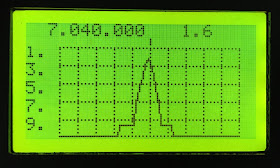Last time I upgraded iPhones I decided to lease the
iPhone X rather than buying outright. This spreads the expense out over two years. After watching the latest iPhone launch, none of the new models attracted me and I already find the X too big in my pocket.
Looking around eBay I saw some second hand
iPhone SEs at decent prices and I was lucky enough to get a 64GB model for AU$180. The colour is ugly (to me) rose gold but it was in excellent condition and the battery health is 99%. I was lucky, but even at $250, these are a good buy.
The iPhone SE is compact in the hand and pocket. The A9 processor is decent and it seems quite snappy running
iOS 13 GM. (I'm in the developer program so have early access).
Although I'll miss the extra screen realestate of the iPhone X, I don't miss the size of the body and I prefer TouchID to FaceID. I love that I can wake the device with my finger when it's lying flat on a table.
Battery life isn't as good as the X although it's a fresh install and the Photos app is hammering the CPU doing all sorts of analysis so I expect this to continue for a day or two. Interestingly, Siri is using 20% of battery so far, so I've turned that off for now.
I returned the iPhone X to Telstra today. My goodness that SEBEL system is a dog! Poor Telstra shop staff. I'm saving $30 a month on a "bring your own device" plan but I know I can do better, perhaps on
Aldi Mobile but I'll leave it a month or two before making more changes.
The sales woman was puzzled that I thought that $50 for 15GB was too much and explained that I was getting "unlimited" data. Oh, I said, 10 Terabytes? She had to explain that mobile phone operators mean something different by the word "unlimited".
I'm not alone in my enthusiasm for the iPhone SE, check out BuzzFeed's "
Tim Cook Will Have To Pry My iPhone SE From My Cold, Tiny Hands".
There are a few apps, including ones from Apple, that don't handle the small screen too well. Happily, my
WSPR Watch app has always been tested on the iPhone SE size screen so I'm not embarrassed there.
iOS 13 seems solid despite a rocky beta period. I think they've wisely taken out the things that were causing trouble and deferred them to 13.1.
Apple should make a phone the physical size of the SE, but with the edge to edge screen. I'm waiting for in-screen TouchID to appear, or perhaps FaceID could be made to work at very high angles?
 A lovely day for a ham radio meetup. Great to see everyone and Dural is looking great with the amazing new antenna tower now in use.
A lovely day for a ham radio meetup. Great to see everyone and Dural is looking great with the amazing new antenna tower now in use.















